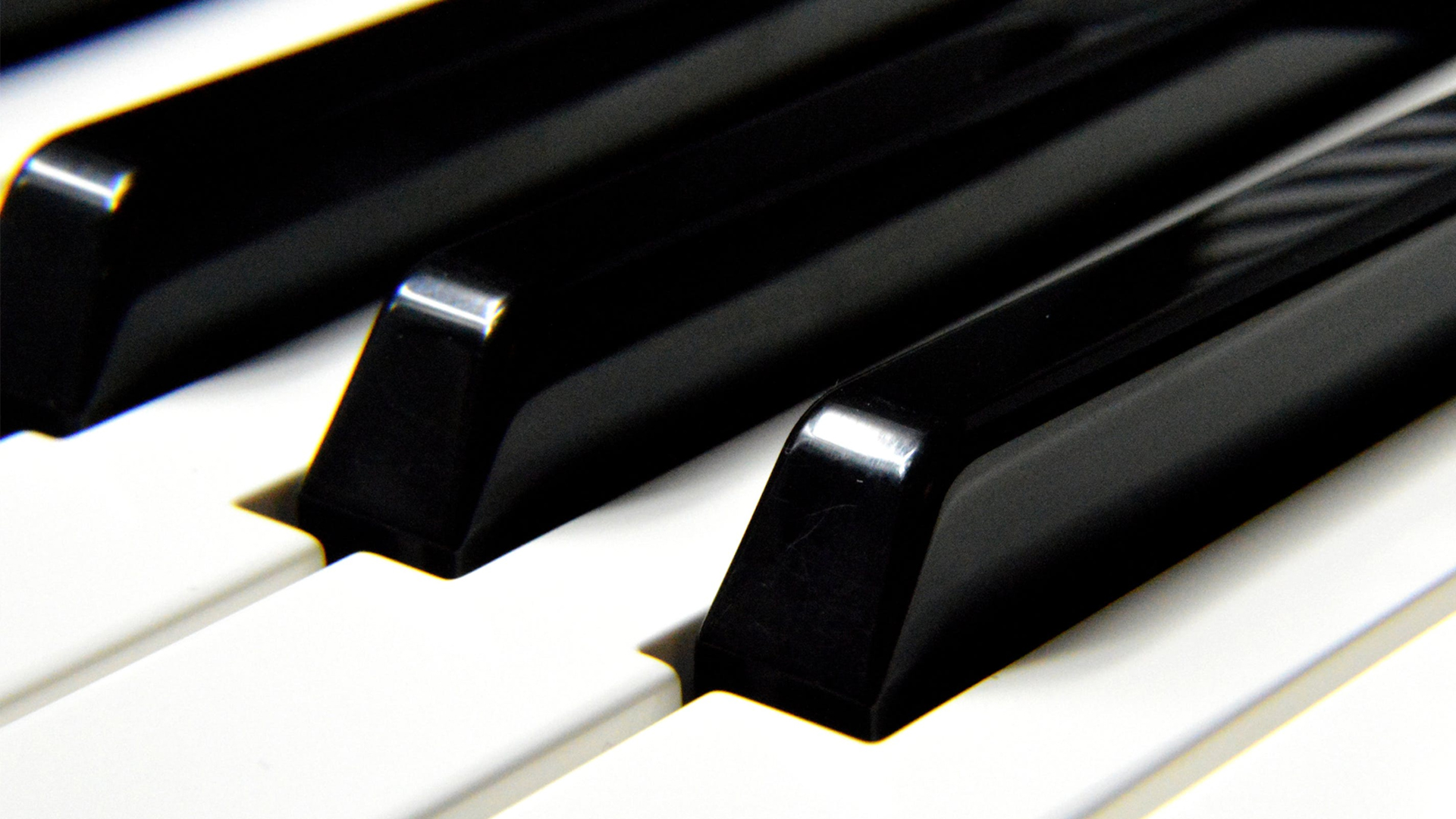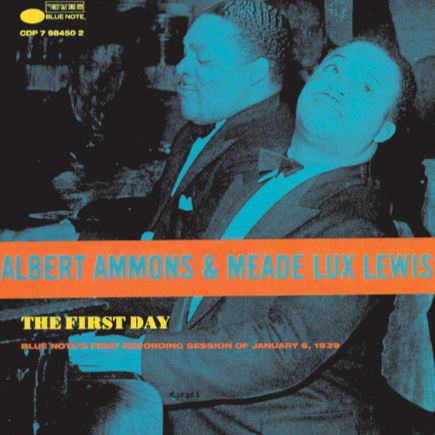Albert Ammons: maître du boogie-woogie et pionnier du piano jazz
Figure incontournable de l’histoire du jazz américain, Albert Ammons s’impose comme l’un des grands initiateurs du boogie-woogie, un style de piano rythmé, percussif et envoûtant, né au sein des communautés afro-américaines du début du XXe siècle. Fils de musiciens et père du saxophoniste Gene Ammons, il baigne très tôt dans un environnement musical propice à l’éveil artistique. Dès l’âge de dix ans, il se forme au piano, influencé par les sons du ragtime et du blues, qui nourriront durablement son langage musical.
Au lendemain de la Première Guerre mondiale, Ammons se tourne résolument vers le blues, qu’il apprend en écoutant les enregistrements des grands pianistes de son époque. En 1934, il fonde son propre ensemble, les Rhythm Kings, qui mêle les influences du swing, du blues et du boogie-woogie. Cette fusion originale contribue à faire évoluer le jazz de l’entre-deux-guerres, préparant le terrain à de nouvelles formes d’expression rythmique.
C’est en 1936 qu’il enregistre l’un des titres les plus emblématiques du genre, Boogie-Woogie Stomp. Ce morceau marque un tournant : c’est le premier boogie-woogie à 12 mesures interprété par un orchestre avec piano, une formule novatrice qui sera bientôt reprise par de nombreux ensembles de jazz. Cette période consacre Ammons comme une référence du genre, au même titre que Meade ‘Lux’ Lewis et Pete Johnson, avec lesquels il forme le célèbre trio surnommé « les trois rois du boogie-woogie ».
Leur reconnaissance publique culmine lors du concert historique From Spirituals to Swing, donné au Carnegie Hall en 1938. Ce moment-clé de l’histoire musicale américaine met en lumière la richesse des traditions afro-américaines et fait du boogie-woogie un phénomène culturel d’ampleur. Sur cette scène prestigieuse, Ammons, Lewis et Johnson livrent une prestation mémorable, alliant virtuosité, intensité et joie communicative. Par son retentissement artistique et symbolique, ce concert marque une avancée majeure : pour la première fois, des musiciens noirs accèdent à une telle visibilité dans un lieu emblématique de la culture blanche.
Le style pianistique d’Albert Ammons se distingue par une main gauche puissante, aux basses obstinées et syncopées, soutenue par une main droite vive et inventive, multipliant les riffs complexes et les improvisations audacieuses. La pulsation répétitive propre au boogie-woogie donne à sa musique un élan dansant, festif, irrésistible, tout en laissant s’exprimer une grande liberté individuelle.
Par son énergie, sa créativité et son influence, Albert Ammons demeure l’un des plus grands architectes du piano jazz. Son héritage, enraciné dans la tradition afro-américaine, continue d’inspirer musiciens et mélomanes bien au-delà des frontières du genre.
Albert Ammons: maestro del boogie-woogie y pionero del piano jazz
Figura imprescindible en la historia del jazz estadounidense, Albert Ammons se impone como uno de los grandes iniciadores del boogie-woogie, un estilo de piano rítmico, percusivo y fascinante, nacido en las comunidades afroamericanas a principios del siglo XX. Hijo de músicos y padre del saxofonista Gene Ammons, creció en un entorno musical que favoreció desde muy temprano su despertar artístico. A los diez años comenzó a estudiar piano, influenciado por el ragtime y el blues, estilos que marcarían profundamente su lenguaje musical.
Tras la Primera Guerra Mundial, Ammons se volcó decididamente en el blues, aprendiendo a tocarlo gracias a las grabaciones de los grandes pianistas de su época. En 1934 formó su propio grupo, los Rhythm Kings, que integraba influencias del swing, del blues y del boogie-woogie. Esta fusión original contribuyó significativamente a la evolución del jazz entre guerras, abriendo nuevas vías de expresión rítmica.
En 1936 grabó uno de los temas más emblemáticos del género, Boogie-Woogie Stomp. Esta pieza marcó un punto de inflexión: fue el primer boogie-woogie de 12 compases interpretado por una orquesta con piano, una fórmula innovadora que pronto sería adoptada por muchos conjuntos de jazz. Esta etapa consagró a Ammons como referente del estilo, junto con Meade ‘Lux’ Lewis y Pete Johnson, con quienes formó el célebre trío conocido como “los tres reyes del boogie-woogie”.
El reconocimiento masivo llegó con el histórico concierto From Spirituals to Swing, celebrado en el Carnegie Hall en 1938. Aquel evento clave en la historia de la música estadounidense mostró la riqueza de las tradiciones afroamericanas y catapultó el boogie-woogie al centro de la escena cultural. En ese escenario prestigioso, Ammons, Lewis y Johnson ofrecieron una actuación memorable, que combinó virtuosismo, energía y una alegría contagiosa. El impacto artístico y simbólico del concierto fue considerable: por primera vez, músicos afroamericanos alcanzaban tal visibilidad en un lugar emblemático de la cultura blanca.
El estilo pianístico de Albert Ammons se caracteriza por una mano izquierda potente, con bajos obstinados y sincopados, sostenida por una mano derecha ágil e imaginativa, llena de riffs complejos e improvisaciones audaces. La pulsación repetitiva propia del boogie-woogie confiere a su música un carácter festivo, bailable e irresistible, al tiempo que permite una gran libertad expresiva.
Por su energía, creatividad e influencia, Albert Ammons sigue siendo uno de los grandes arquitectos del piano jazz. Su legado, profundamente enraizado en la tradición afroamericana, continúa inspirando a músicos y amantes del jazz en todo el mundo.
Albert Ammons: maestro del boogie-woogie e pioniere del pianoforte jazz
Figura centrale nella storia del jazz americano, Albert Ammons si afferma come uno dei grandi iniziatori del boogie-woogie, uno stile pianistico ritmico, percussivo e trascinante, nato all’interno delle comunità afroamericane all’inizio del XX secolo. Figlio di musicisti e padre del sassofonista Gene Ammons, cresce in un ambiente musicale che ne favorisce precocemente la sensibilità artistica. All’età di dieci anni inizia a studiare il pianoforte, ispirato dal ragtime e dal blues, due stili che influenzeranno profondamente il suo linguaggio musicale.
Dopo la Prima guerra mondiale, Ammons si dedica con convinzione al blues, che impara ascoltando le registrazioni dei grandi pianisti del suo tempo. Nel 1934 fonda il suo gruppo, i Rhythm Kings, che fonde elementi di swing, blues e boogie-woogie. Questa originale combinazione contribuisce all’evoluzione del jazz tra le due guerre, aprendo la strada a nuove forme espressive sul piano ritmico.
Nel 1936 incide uno dei brani più rappresentativi del genere, Boogie-Woogie Stomp. Questo pezzo segna una svolta: è il primo boogie-woogie a 12 battute eseguito da un’orchestra con pianoforte, una formula innovativa che verrà presto adottata da molte formazioni jazz. In questo periodo, Ammons viene consacrato come figura di riferimento del boogie-woogie, al pari di Meade ‘Lux’ Lewis e Pete Johnson, con cui forma il celebre trio soprannominato i tre re del boogie-woogie.
Il riconoscimento presso il grande pubblico arriva nel 1938, con il concerto storico From Spirituals to Swing al Carnegie Hall. Questo evento cruciale nella storia della musica americana mette in luce la ricchezza delle tradizioni afroamericane e consacra il boogie-woogie come fenomeno culturale di ampia portata. Su quel palcoscenico prestigioso, Ammons, Lewis e Johnson danno vita a un’esibizione memorabile, coniugando virtuosismo, potenza e gioia contagiosa. L’impatto simbolico e artistico del concerto è enorme: per la prima volta, musicisti neri ottengono una tale visibilità in uno dei templi della cultura bianca.
Lo stile pianistico di Albert Ammons si distingue per una mano sinistra vigorosa, con bassi ostinati e sincopati, sostenuta da una mano destra vivace e creativa, capace di produrre riff complessi e improvvisazioni ardite. La pulsazione ripetitiva del boogie-woogie dona alla sua musica un’energia danzante e festosa, senza mai limitare la libertà individuale dell’interprete.
Con la sua energia, originalità e influenza, Albert Ammons rimane una figura chiave nell’architettura del pianoforte jazz. Il suo lascito, profondamente radicato nella tradizione afroamericana, continua a ispirare musicisti e appassionati ben oltre i confini del genere.
Albert Ammons: master of boogie-woogie and pioneer of jazz piano
A towering figure in the history of American jazz, Albert Ammons stands out as one of the foremost pioneers of boogie-woogie — a rhythmic, percussive, and captivating piano style that emerged from early 20th-century African American communities. The son of musicians and father of saxophonist Gene Ammons, he was immersed from a young age in a rich musical environment. At just ten years old, he began learning the piano, shaped by the sounds of ragtime and blues, which would leave a lasting imprint on his musical voice.
After World War I, Ammons turned decisively to the blues, developing his style by listening to recordings of the era’s great pianists. In 1934, he founded his own band, the Rhythm Kings, blending swing, blues, and boogie-woogie influences. This original fusion played a key role in shaping the jazz of the interwar period, paving the way for new rhythmic expressions.
In 1936, he recorded one of the genre’s most iconic tracks, Boogie-Woogie Stomp. The piece marked a major milestone: it was the first 12-bar boogie-woogie performed by a full orchestra with piano — an innovative format that would soon be adopted by many jazz bands. This period solidified Ammons’ reputation as a boogie-woogie icon, alongside Meade ‘Lux’ Lewis and Pete Johnson, with whom he formed the legendary trio known as the three kings of boogie-woogie.
Their public acclaim peaked with the historic From Spirituals to Swing concert at Carnegie Hall in 1938. This landmark event in American musical history showcased the depth of African American traditions and brought boogie-woogie into the cultural spotlight. On that prestigious stage, Ammons, Lewis, and Johnson delivered a riveting performance — full of virtuosity, power, and infectious joy. Artistically and symbolically, the concert was a breakthrough moment: for the first time, Black musicians were featured so prominently in a space long dominated by white cultural norms.
Albert Ammons’ piano style is defined by a powerful left hand, with insistent, syncopated bass lines, paired with an agile, inventive right hand full of intricate riffs and bold improvisations. The driving, repetitive pulse of boogie-woogie gives his music an irresistibly festive, danceable character while allowing for rich personal expression.
With his energy, creativity, and lasting impact, Albert Ammons remains one of the foundational architects of jazz piano. His legacy, deeply rooted in African American tradition, continues to inspire musicians and listeners across the world.


